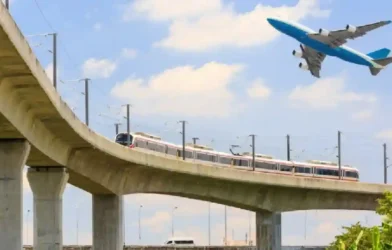Subtotal ₹0.00
REITs
In its latest study on Infrastructure Investment Trusts (InvITs) and Real Estate Investment Trusts (REITs), Knight Frank India highlights India’s rapid emergence as a major infrastructure investment hub in Asia.
The report positions India as the region’s fourth-largest market for REITs and InvITs, with InvITs leading the way in terms of scale, diversification, and growth potential. While over 1,000 publicly listed REITs and InvITs worldwide command a combined market capitalisation of nearly USD 3 trillion, India’s five REITs and seventeen InvITs account for USD 33.2 billion.
With InvITs’ Assets Under Management (AUM) already at USD 73 billion in FY 2025 and projected to more than triple to USD 257.9 billion by 2030, the sector’s momentum is set to accelerate on the back of institutional allocations, pension and insurance fund participation, foreign inflows, and growing retail investor interest.
Commenting on the same, Shishir Baijal, Chairman and Managing Director, Knight Frank India, said, “India’s InvIT platform is at the threshold of a transformative growth phase. From an AUM base of USD 73 billion today, we are set to scale to USD 250–265 billion by 2030, marking a 3.5 times expansion in less than five years. This will not only bridge critical infrastructure financing gaps but also open new pathways for domestic and global capital to participate in India’s growth story. The challenge and opportunity lie in broadening participation — from pension and insurance funds to retail investors — while maintaining the transparency and governance standards that have underpinned the sector’s credibility. InvITs have the potential to become the cornerstone of India’s infrastructure financing ecosystem and a magnet for global infrastructure capital.”
Investment Potential of InvITs in India’s Infrastructure Growth Story
Investments in India’s infrastructure have expanded rapidly in recent years, driven by the need to modernise assets and boost efficiency. Central and state governments have committed significant capital expenditure, with the Centre leading. Central government spending on core infrastructure surged from USD 12 bn in FY 2015 to USD 75 bn in FY 2025, a 6.2-fold rise, growing from 0.6% of GDP to 2.0% over the same period, reflecting a strong policy focus on infrastructure-led growth.
Infrastructure development will be crucial to achieving India’s USD 7 trillion economy target, which Knight Frank estimates will require USD 2.2 trillion in investment. Meeting this demand will need substantial private sector participation alongside public funding. While greenfield projects carry higher risks, brownfield assets offer strong potential for private capital deployment. InvITs have emerged as an effective financing tool, directing institutional and retail funds into operational assets, enabling capital recycling, and supporting timely infrastructure development.
To boost private participation, the government has introduced measures to channel capital into the sector. In addition to clear Public Private Partnership (PPP) frameworks for greenfield projects, it has prioritised monetising brownfield assets to unlock value for new development. The National Monetisation Pipeline (NMP), launched in 2021 with a target of INR 6 trillion for FY 2021–25, achieved 95% of its goal. Building on this, NMP 2.0 announced in the FY 2025–26 Union Budget targets monetising INR 10 trillion worth of revenue-generating assets by 2030. These initiatives highlight the government’s commitment to attracting private investment, with InvITs positioned as a key platform for transparent, scalable, and long-term capital mobilisation.
Global Positioning and Comparative Scale
India’s REIT and InvIT market ranks fourth in Asia in terms of total market capitalisation, behind Japan, Singapore, and Hong Kong. However, India’s growth trajectory is among the fastest in the region, particularly in InvITs. The expansion of asset classes under the InvIT umbrella, combined with supportive policy measures, is expected to accelerate India’s movement toward becoming a top-three market within the next decade.
The report identifies several strategies to unlock the next phase of InvIT growth:
• Expanding Retail Participation: Increasing awareness and accessibility of InvITs through targeted investor education campaigns, simplified investment processes, and inclusion in mainstream wealth management offerings.
• Hedging Currency Risk for Foreign Investors: Offering cost-effective currency hedging tools to mitigate forex volatility and encourage higher foreign capital inflows.
• Broadening Domestic Institutional Exposure: Raising exposure limits for pension and insurance funds and encouraging public sector financial institutions to participate more actively.
• Diversification of Sectors: Bringing new asset categories such as data centres, urban transport, and water infrastructure into the InvIT framework to broaden the investment base.
Rajeev Vijay, Executive Director – Government and Infrastructure Advisory, Knight Frank India, further added, “The next chapter for India’s InvIT market will be about depth and diversity. Institutional investors, especially sovereign and global pension funds, have already anchored the market. The task now is to unlock larger pools of domestic long-term capital, particularly from insurance and pension funds, where current exposure is only 3–5 percent. At the same time, expanding the scope of InvIT assets to include emerging infrastructure categories will further enhance investor interest. With policy stability, regulatory clarity, and effective currency risk management, India can position itself among the world’s leading destinations for infrastructure investment over the coming decade.”
India’s InvIT market is entering a pivotal stage. With USD 73 billion in AUM today and the potential to reach USD 258 bn by 2030, InvITs are set to play an increasingly important role in financing the country’s infrastructure ambitions.
By deepening domestic institutional participation, expanding retail access, and attracting greater foreign investment through risk-hedging measures, India can secure a stable and diversified capital base for its infrastructure pipeline. In doing so, the country not only strengthens its position as Asia’s fourth largest REIT and InvIT market but also moves closer to becoming a global leader in infrastructure investment.






